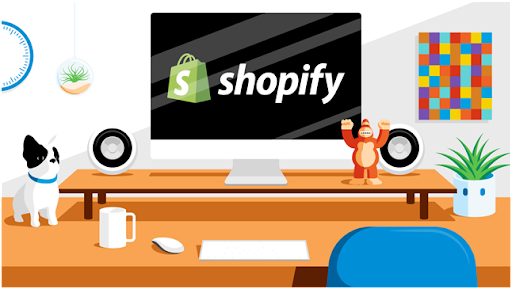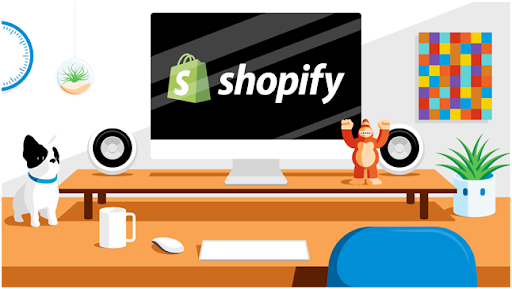
Nowadays with an overwhelming demand for e-commerce, having a powerful online presence becomes a must for platforms and retailers. Shopify stands out as one of the highly recommended online e-commerce solutions worldwide due to its outstanding reliability in terms of website building and expanding online stores. However, making your Shopify Store a success on Google requires proper strategies of search engine optimisation (SEO).
Whether it’s about doing more accurate keyword research or getting your e-commerce website SEO optimized we went through some of the main Shopify SEO services to help your store ascend the search engine rankings.
Keyword Research and Strategy Development
- Identifying Niche-Specific Keywords: It’s not the quantity of keywords you have. It’s their relevance and fit with your niche. Find out what words and phrases are being typed into search engines by people looking to buy products similar to yours.
- Long-Tail Keywords for E-commerce: The search volume of long-tail keywords might not be as large as their shorter-tail cousins, but their synergy with higher conversion rates that are associated with buying intent and lower competition makes them indispensable for e-commerce.
- Competitor Keyword Analysis: Take your competitors as a stepping stone. Dig into their keyword strategies, noticing anything they have missed or are weak on. You can also take cues on which keywords serve them well and copy that.
On-Page SEO Optimization for Shopify
Although people might be interested in your store just by looking at it, the visual appearance is probably not enough to ensure they are coming back to you for your products and services every time. To help make your website more visible in search engines and attract more organic leads, you will need to improve its on-page SEO.
To achieve this, the content, meta tags, and images on the site should be optimized to improve its search rank in Google and on other search engines.
Meta Tags and Descriptions
Meta tags and meta descriptions are the silent salesmen of your content, selling your article to potential viewers. They need to be carefully constructed to be persuasive, succinct, and SEO-focused.
Image Optimization and Alt Texts
Visual impact is important in attracting consumers, but your visuals should also be optimized for search: make sure that your images are high resolution and have descriptive alt texts.
URL Structure and User Navigation
Write URLs that are human-sounding, short, and engine-friendly, and build in the paths for users to find their way.
Technical SEO Audits and Improvements
Under the surface, your store possesses powerful features that extend beyond the initial impression. It’s vital to explore these aspects deeply to ensure the infrastructure is exceptionally strong. Speed and performance play pivotal roles in achieving higher page rankings.
- Optimizing for Speed: Enhancing your site’s speed is crucial for better performance and higher rankings.
- Mobile Optimization: In 2024, mobile optimization is not just an option; it’s a necessity. Testing your store’s performance across different devices is essential to provide a seamless mobile shopping experience.
- Search Engine Visibility: If search engines are struggling to locate your store, addressing and resolving any indexing obstacles is crucial. This could involve rectifying issues with a robots.txt file or pagination errors.
By addressing these areas, you will make sure that your store is not only visible but also performs optimally across all platforms, thereby enhancing your brand’s presence in search results.
Content Creation and Marketing for E-commerce
Your content acts as a pivotal ambassador, shaping your store’s identity and drawing organic traffic. In the expansive digital arena, it’s vital to implement a strategy that resonates with your audience.
- Blogging as a Growth Lever: Blogging stands out as a key growth strategy for e-commerce. It goes beyond simple product listings, offering valuable insights through informative blogs. These pieces cater to your audience’s needs and inquiries, incorporating SEO to boost visibility.
- Product Descriptions: This is an important aspect and needs to be on-brand with well-written, engaging, and succinct descriptions ideally written for the correct audiences on search engines.
- The Power of Video Content: Now, People would rather watch a video than spend time reading long texts. Even if the answer is only in one sentence, people would still prefer to watch it over reading it and the virality of a video can be very appropriate and more effective convey a message than a long article with full text. If done right, it can show in search results.
Building Backlinks: Authority and Trustworthiness
Backlinks serve as essential endorsements for your store. Develop a strategy focused on attracting high-quality backlinks.
- Guest Blogging for Backlink Acquisition: Guest blogging with industry peers offers an opportunity to secure valuable backlinks.
- Directory Submissions and Citations: Despite their perceived outdatedness, directory submissions and relevant citations are crucial components of a robust backlink portfolio.
- Analyzing Backlink Quality: Focus on quality over quantity. Conduct thorough reviews of your backlink profile to ensure each external link positively impacts your SEO performance.
Employing these strategies with a professional and authoritative approach will enhance your site’s visibility and credibility.
Local SEO Strategies for Shopify Retailers
- Optimizing for Google My Business: Get your name right online. Make sure your Google My Business profile presents all the right details about you and your business in a detailed and accurate way to your local audience.
- Local Keyword Optimization: Local vernaculars should be integrated in your keyword strategy so that your content becomes more closely aligned with the local search patterns of the community.
By using these strategies, organisations will be able to reach and speak to their local public in clear, concise and informative ways that ultimately engage the readers to take action.
Mobile Optimization for Enhanced User Experience
If you don’t provide a consistent experience for customers wherever they choose to shop, you will lose their business. There’s no choice but to ensure your site performs as well on mobile devices as it does on desktops.
- Responsive Design: The usage of smartphones has risen drastically, and screens come in different shapes and sizes.
- Mobile-Friendly Checkout Process: Reduce abandonment by limiting the amount of information a mobile user has to put in at checkout, Use autofill, change the form fields, and also offer a range of payment methods.
- Utilizing Accelerated Mobile Pages (AMP): AMP (Accelerated Mobile Pages) is a Google-sponsored project that speeds up the display of web pages on mobile devices, improving the user experience for the reader.
Analytics, Reporting, and Continuous Optimization
Consistently monitoring and analyzing your e-commerce website’s performance is crucial to identify areas for improvement and growth.
- Data-Driven Decision Making: Utilize analytics tools to track and analyze user behavior, traffic sources, and conversion rates. This data can inform decision-making, leading to continuous optimization of your store.
- Regular Performance Audits: Conduct regular audits of your website to identify and fix any technical issues or errors. This ensures that your site is always performing at its best.
- A/B Testing: Experiment with different elements of your website, such as landing pages, product descriptions, or calls-to-action, through A/B testing to determine the most effective strategies for conversion and optimization.
Conclusion
Ultimately, this means that doing good, solid SEO work for your Shopify store also means creating something that both the engines and your customers will like. Going for an SEO strategy that is both careful and holistic really means laying the groundwork for long-term online success.
Interesting Related Article: “eCommerce Strategy and Planning Made (Relatively) Simple “








